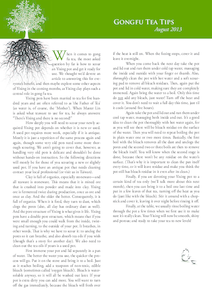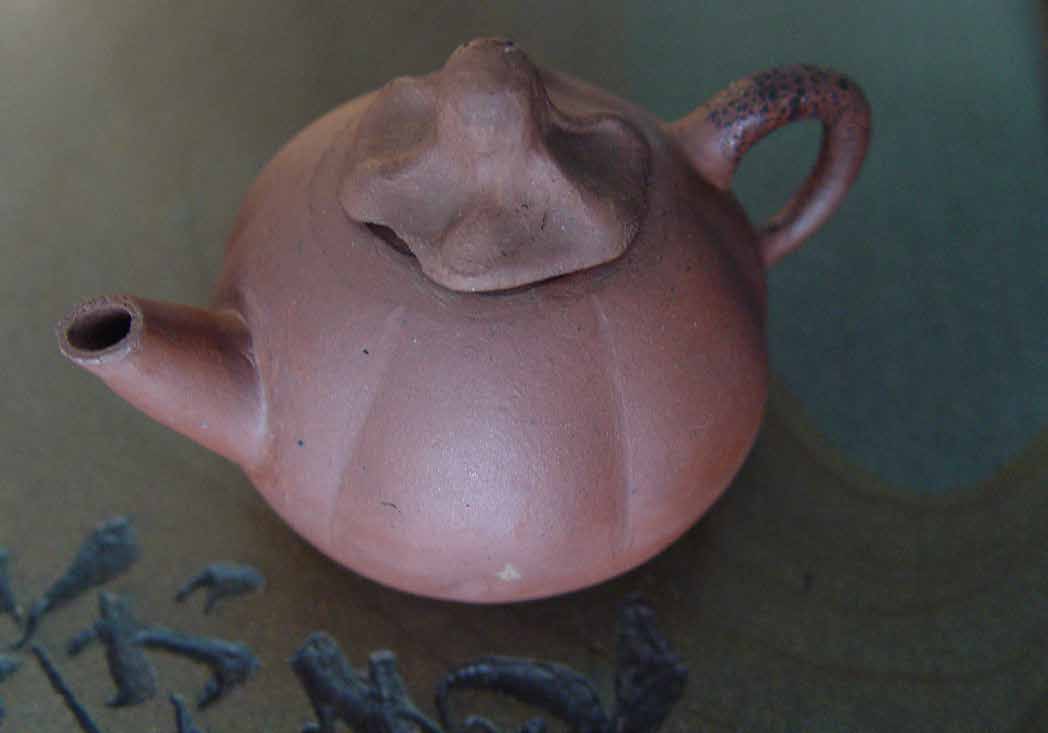
 |
|
When it comes to gong fu tea, the most asked question by far is how to scour an Yixing pot and get it ready for use. We thought we'd devote an article to answering this for everyone's benefit, and then maybe explore some other aspects of Yixing in the coming months, as Yixing clay plays such a central role in gong fu tea. Yixing pots have been married to tea for five hundred years and are often referred to as 'the Father of Tea' (as water is, of course, the 'Mother'). When Master Lin is asked what teaware to use for tea, he always answers: "There's Yixing and there is no second!"

How deeply you will need to scour your newly acquired Yixing pot depends on whether it is new or used. A used pot requires more work, especially if it is antique. Mostly it is just a repetition of the same process again and again, though some very old pots need some more thorough scouring. We aren't going to cover that, however, as handling very old pots is delicate and shouldn't be done without hands-on instruction. So the following directions will mostly be for those of you scouring a new or slightly used pot. If you have an antique pot that needs cleaning contact your local professional (or visit us in Taiwan).
Clay is full of organics, especially stoneware - and all teaware is stoneware. This means that it is mined ore that is crushed into powder and made into clay. Yixing ore is fermented twice during production, once as ore and once as clay. And the older the better. Consequently, it is full of organics. When it is fired, they turn to dust, which clogs the pores (also, all clay has ordinary dust as well). And the pore structure of Yixing is what gives it life. Yixing pots have a double pore structure, which means that if you were small enough you could walk from the inside, twisting and turning, to the outside of your pot. It breathes, in other words. That is why we have to scour it: to unclog the pores so it can breathe, and also absorb tea oils if you wish (though that's a story for another day). We also need to clean out the tea oils if yours is a used pot.

First immerse your pot and lid separately in a pan of water. The better the water you use, the quicker the process will go. Put it on the stove and bring it to a boil. Just as it reaches boiling, add a teaspoon of non-toxic, edible bleach (sometimes called 'oxygen bleach'). Bleach is watersoluble anyway, so it will all be washed out later. If your pot is extra dirty you can add more. You will want to turn off the gas immediately, because the bleach will froth over if the heat is still on. When the fizzing stops, cover it and leave it overnight.
When you come back the next day take the pot and lid out and run them under cold tap water, massaging the inside and outside with your finger or thumb. Also, thoroughly clean the pot with hot water and a soft scouring pad to remove all bleach residues. Then, again put the pot and lid in cold water, making sure they are completely immersed. Again bring the water to a boil. Only this time do not add any bleach, just water! Turn off the heat and cover it. You don't need to wait a full day this time, just til it cools (around five hours). Again take the pot and lid out and run them under cool tap water, massaging both inside and out. It's a good idea to clean the pot thoroughly with hot water again, for as you will see there will be bleach residue on the surface of the water. Then you will need to repeat boiling the pot in plain water one or two more times. Basically, the first boil with the bleach removes all the dust and unclogs the pores and the second two or three boils are then to remove the bleach itself. You will know when the second stage is done, because there won't be any residue on the water's surface. (That's why it is important to clean the pan itself every time, or it will leave residue and make you think the pot still has bleach residue in it even after its clean.)
Finally, if you are devoting your Yixing pot to a certain kind of tea only (we'll talk more about this next month), then you can bring it to a boil one last time and put in a few leaves of that tea, turning off the heat as you do (just like with the bleach). Stir it around with a chopstick and cover it, leaving it over night before rinsing it off.
Finally, at the table, we usually rinse boiling water through the pot a few times when we first use it to make sure it's really clean. Your Yixing will now be smooth, shiny and porous; and ready to take your tea to new levels!
